Ai Weiwei's Self-Portrait 艾未未的自述
Dissident Artist Ai Weiwei Taken Into Custody by Chinese Government
艾未未被中共党政逮捕
by Eric Shalit on April 4, 2011
Ai Weiwei, Forever, Bicycles, 2003: Constructed from 42 Forever brand bicycles. Manufactured in Shanghai since 1940, the Forever bicycle was an essential mode of transportation that has become an icon of the post-revolutionary era. Made of heavy steel, these utilitarian bicycles were meant to last forever.

More proof that the bicycle intersects all things, including politics, democracy, and social activism can be seen in the work and life of artist/activist Ai Wewei. The bicycle has meaning and utility for each of us. In the hands of a master artist like Ai Weiwei, it’s all about meaning. While he may not tell us exactly what his work means, each of us are free to deduce symbolism. I see the bicycle representing the power of the individual, joined together to make a structure that can rise above it all. I notice in the above work, that although the bicycle bodies are all joined together, the wheels are free to spin independently. What does it mean to you?

 On Sunday (4/3/11) the Chinese authorities detained Ai Weiwei, China’s best-known living artist and stubborn government critic, as he tried to board a plane for Hong Kong. Mr. Ai’s wife, his nephew and a number of his employees were also taken into custody during a raid on his studio on the outskirts of the capital.
On Sunday (4/3/11) the Chinese authorities detained Ai Weiwei, China’s best-known living artist and stubborn government critic, as he tried to board a plane for Hong Kong. Mr. Ai’s wife, his nephew and a number of his employees were also taken into custody during a raid on his studio on the outskirts of the capital.Rights advocates say the detentions are an ominous sign that the Communist Party’s six-week crackdown on rights lawyers, bloggers and dissidents is spreading to the upper reaches of Chinese society. Mr. Ai, 53, the son of one of the country’s most beloved poets, is an internationally renowned artist, a documentary filmmaker and an architect who helped design the Olympic stadium in Beijing known as the Bird’s Nest.
Ai Weiwei is also active in architecture, curating, photography, film, and social and cultural criticism. Ai collaborated with Swiss architects Herzog & de Meuron as the artistic consultant on the Beijing National Stadium for the 2008 Olympics. Besides showing his art he has been investigating government corruption and cover-ups. He was particularly focused on exposing an alleged corruption scandal in the construction of Sichuan schools that collapsed during the 2008 Sichuan earthquake. He intensively uses the internet to communicate with people all over China, especially the younger generation.
Ai, is a prolific user of twitter, blogs and video and maintains a constant stream of output, which has now gone eerily quiet. One by one, it seems, China’s government is moving to silence radical, or even questioning voices.
More than 20 lawyers, writers, bloggers and other activists have now been charged with “subversion” and other types of thought-crime in recent weeks and we must now wait, and watch carefully, to see whether Ai is charged too.
To date, despite several brushes with the security apparatus, Ai has managed to escape serious trouble – even when he was detained last November, it was clearly a limited move, designed to stop Ai attending a wake for his soon-to-be-demolished Shanghai studio – but this time it feels different.
For a long time, Ai was widely presumed to be protected from arrest by dint of his status as the son of Ai Qing, one of China’s greatest modern poets, but it seems that after several shots across the bow (Ai just ploughed on) they’ve lost patience.
Ai Weiwei standing in the rubble of his studio in Shanghai, January 2011, which was demolished authorities apparently as retribution for his outspoken criticism of government corruption and human rights abuses. He has come to see his conflict with the government as performance art.
Ai Weiwei has also made several feature length films about the gridlock in Beijing (2003-2005); the camera travels through the streets of Chang’an Boulevard and the Second and Third Ring Roads. Without any additional plot, the films can be distinguished by the weather conditions: “Beijing: The Second Ring” was shot only on cloudy days, while “Beijing: The Third Ring” only on sunny days – “an almost mathematical and unemotional way to show the powerlessness of the people, and the blind nature of the redevelopment” (Ai Weiwei). Ultimately the daily writing on his own blog is also an integral part of Ai Weiwei’s artistic activities, for he believes that taking a social and political stand is the moral responsibility of every artist.
Below is a preview of a PBS Frontline documentary called “Who’s Afraid of Ai Weiwei”. The world needs more Ai Weiweis. Please follow his current situation in news media that cover such things, like the New York Times.







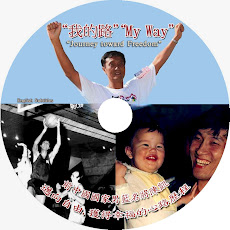







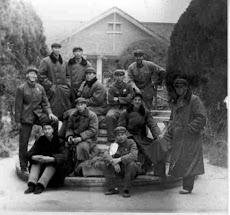

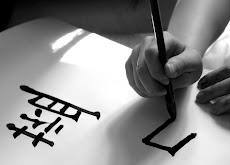
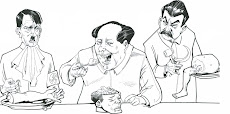
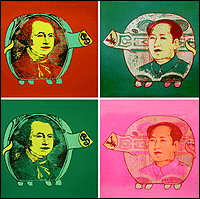
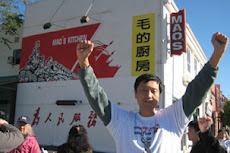


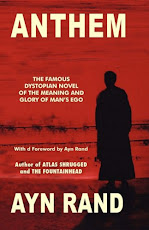










No comments:
Post a Comment